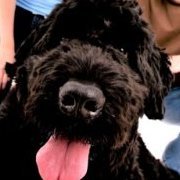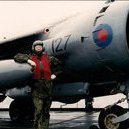Search the Community
Showing results for tags 'SBS Models'.
-
Hi all. One of my modelling interests has been the aircraft of the inter-war Yugoslav airline, Aeroput. I've so far built seven of their types (I've put a group photo in the Inspiration Gallery), and for this GB will be adding a Farman F.190 using this kit. I'll be starting sometime in July, so I'll save the 'sprue shots' (plus discussion of the contentious issue of what scheme the aircraft carried in Aeroput service ), until then. In the meantime, if you're interested, this link provides a bit of history (including photos), relating to Aeroput's F.190. Cheers
-
Hi Gentlemen! SBS Models provides us with Another nice Fiat G-50. This time an early Serie I model . Second Fiat G-50 I build from SBS ( third one on the way 😉). I still think it's the best option available these times at that scale. Good point : the new engineering of the windscreen part , makes it easier to fix on the body. Also the second added decal sheet with good color match for Finnish roundels . Bad point : lack of "pointed" winter hub cap. presented on lateral box art and not included on the kit . Had to buy it separately ( overall cost almost half the price with fees of the initial kit 😡) Anyway it's still a very good kit, and I dream , one day , SBS would go on Macchi MC 200 series with this quality 🙏. ready to buy some units of it 😆 . Wanted to build one of the few " serie I" really used on operational duties ( the ones used during Spanish civil war, arrived lately and did not see real " fighting" activities there.) So I went for an ilmavoimat aircraft.( I have a great interested for this AF ). This plane went on different camouflage sessions. After the "peeling off" of initial Italian paint, was first overpainted with a light olive green paint made at unit level, with original paint see through , and after with black paint addition to be in line with new Finnish aircraft painting at that time. I decided to let the Italian scheme as it was on the lower surfaces as it was probably not overpainted during this work. Paints used : I started with classic Italian scheme of "mimetico" colors from MRP. ( Gallio/ Bruno: verde) and Grigio Azzurro . Then I covered them with Finnish "olive green " from aeromaster and "Black 093M Swedish Army " from MRP ( MRP -173) it's a "toned down " black which is more appropriate , I think at this scale . Looking back at the pictures , and helped with a pertinent comment of one of our members, on another forum ( Hello Jean 😉), I see that I have positioned pitot tubes the wrong way , as they are glued with white glue I will correct this later 😇, as I've already taken the pics , I just present them to you the way it is , sorry for that 🤭 on to the pics now : Italian original scheme : Then : And to present it in a more " dynamic way " Hope you like it ! cheers guys ! take care ! François
- 26 replies
-
- 54
-

-

-
- SBS Models
- Fiat G50
-
(and 1 more)
Tagged with:
-
Finnish and SS Figures SBS Models 1:35 SBS Models are getting a great reputation for their wonderful idiosyncratic aircraft which are mainly in 1/72, as well as their updates and modification sets in for both aircraft and military vehicles. They also stock another range from Hungarian company The Bodi who produce a quite extensive range of figures in 1/35 and 1/48 scales. The three single figure sets being reviewed here are produced in dark grey resin with some very fine details which will need some very careful painting to pick out. The three are:- Finnish Officer WWII – TB-35147 - The figure is moulded with the body and legs moulded as one part, with the arms moulded separately along with three separate heads, one with a steel helmet, one with a brevet style hat and one bare headed. The figure also comes with what looks like the iconic PPSh sub-machine gun with separate 71 round drum magazine, but is in fact the Suomi KP/-31 from which the PPSh was copied after the Winter War with Finland. Finnish Tank Crewman WWII – TB-35148 – As with the Finnish Officer figure, this figure comes with body and legs moulded as one piece, the arms are separate and you also get three choices of head, one with a peaked cap, one with soft tankers helmet, complete with headset and one bare headed. Waffen SS Mechanic WWII – TB-35152 – Unlike the other figures this one is a bit more, shall we say, dismantled. The legs are separate items, which once joined can be added to the torso. The arms are separate too, as is the single head. The figure comes with a ubiquitous Jerry can which he holds in his right hand using the central handle. Conclusion I’ve not come across this series of figures before and at first sight they are really well produced. There is quite a bit of clean-up required to get rid of the thin webs of extraneous resin and the moulding blocks. Once that’s done it’s just down to your patience and steady hand to get the most out of the detail. Review samples courtesy of
-
Messerschmitt Bf.109G-2 & G-6 in Finnish Service (D48013 & D48014) 1:48 SBS Models Finland had a strange WWII, firstly fighting off the advances of Uncle Joe's Soviet Union, for which they received military assistance from the Nazi regime, which was still in the ascendant at that time. They fought alongside the Axis forces against the Soviets for a great portion of WWII, but in 1944 they made peace with the Allies and broke all ties with the Nazis. The Finnish Air Force was provided with a substantial number of aircraft from German production lines, most notably the Bf.109, which with their Swastika-like roundel can confuse the unaware. This came about due to the personal good-luck symbol of a Swedish count, who gave the Finns some of their early aircraft adorned with blue Swastikas, which originally were a symbol of good luck before being subverted and corrupted by the Nazi regime. These new decal sets from our friends at SBS Models in Hungary have decals for four aircraft each, including national markings for ALL options, serials and aircraft codes. That's a refreshing change from the norm, where you might only be able to make one or two of the subjects on a sheet without getting more national markings. Print quality is good, although there is a slight fuzziness to some parts of the blue under magnification, but with good register and colour density this shouldn't notice. The carrier film is very thin and glossy, cut closely around the printed areas, so should settle down nicely on a glossy surface. D48013 Bf.109G-6 in Finnish Service MT416 of 3/HLeLv 34 based at Kymi in summer 1944. Standard German mid-war RLM74/75/76 camouflage. Tactical number yellow 6 of SSgt Aaro Nuorala on fin. MT487 of 2/HLeLv 30 based at Kymi in summer 1944. Standard German mid-war RLM74/75/76 camouflage. Tactical number yellow 7 of WO Mauno Fräntilä on fuselage. MT459 of 1/HLeLv 34 based at Taipalsaari in summer 1944. Standard German mid-war RLM74/75/76 camouflage. Tactical number white 9 of 2Lt Kullervo Joutseno on fuselage. MT505 of PLeLv 41 based at Luonetjärvi in summer 1950. Upper side olive green and lower side DN colour (RLM65) white tactical war game markings. D48014 Bf.109G-2 in Finnish Service MT-207 of 1/LeLv 34 based at Suulajärvi in summer of 1943. Standard German mid-war RLM74/75/76 camouflage. Tactical number white 7 of 1Lt Kalevi Tervo on nose. MT-217 of 1/LeLv 34 based at Utti in summer 1943. Standard German mid-war RLM74/75/76 camouflage. Tactical number red 7 of 1Lt Väinö Pokela on nose. MT-28 of 3/HLeLv 28 based at Värtsilä in summer 1944. Standard warpaint with DN-colour (RLM65) underside. Tactical number yellow 8 of MSgt Erkki Alkio on fuselage. MT-225 of 1/HLeLv 24 based at Suulajärvi in spring 1944. Modified German camouflage of RLM74 and 76. Tactical number yellow 5 of 1Lt Lauri Nissinen on nose. Both decal sheets are provided with full 4-way views of the intended subjects in full colour, with notes where applicable to help you with the details such as the spinner painting. Highly recommended. Review sample courtesy of
-
Rivetting Tools 1:72/1:48 SBS Models There are times when a model really needs a good sanding and polishing to reduce/eliminate the seams where parts meet. This also causes the moulded detail to be lost. Now, panel lines aren’t too difficult to re-instate, but rivets are quite a bit harder. Well they were until the invention of the riveter of which there are now a few examples about. This new pair, one for 1:72 and one for 1:48 have recently been released by SBS Models of Hungary. Both riveters have an air of quality and solidness about them. The nicely moulded wooden handle is comfortable to hold and the brass rivet wheel, permanently mounted into the handle, should last a fair about of use. Operation is easy, just clean the area to be riveted, mark the line with a pencil, then, using a stiff straight edge roll the wheel along the pencil line. When you’re happy with the result give the area a polish with some micromesh and you’re done. Of course practice makes perfect so it might be an idea to try it out on a paint mule or the like before tackling a future masterpiece. Conclusion These tools are a real boon to those who wish to undo the loss of detail through sanding and really should be in every modellers tool box. Nicely made and comfortable to use, just what the modeller needs. Very highly recommended. Review sample courtesy of




